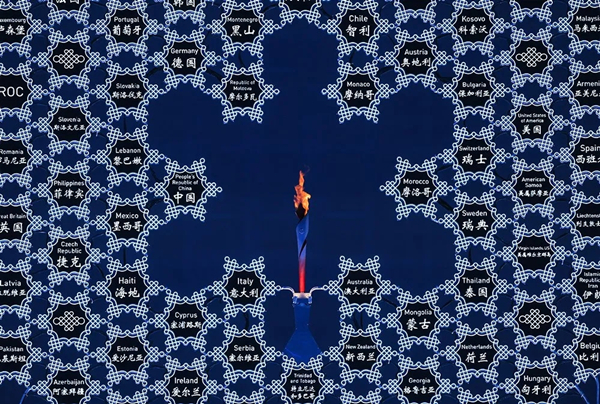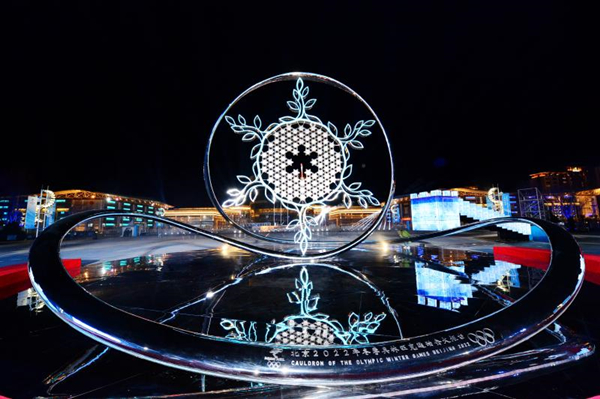Tsinghua artists shape iconic designs for Beijing 2022
 0 Comment(s)
0 Comment(s) Print
Print E-mail China.org.cn, February 15, 2022
E-mail China.org.cn, February 15, 2022
The design went through more than 300 revisions. "Director Zhang's pursuit of aesthetics and control over the details of the final product is the ultimate, and every design draft is an unprecedented challenge," Li remembered.
She added that the snowflake design is seamlessly integrated with the "Chinese knot," an ancient Chinese craft of hand knitting that symbolizes solidarity and prosperity, and showcases simple, ethereal and romantic ice-and-snow aesthetics, embodying the Chinese understanding of "harmony in diversity."

Song also noted they designed the ideal contemporary expression of traditional spirit. "We made artistic innovation on the basis of inheriting traditional Chinese culture."
Closely associated with the snowflake, the elegant Olympic flame cauldrons placed at the three competition zones of the Beijing 2022 Games were designed by a team led by Professor Ma Sai of the AADTHU. The installations include Mobius Strip-inspired ice ribbons, giant snowflakes with olive branches, lights and big turntable pedestals.

The three Olympic flame cauldron installations will be permanently housed at the National Stadium in Beijing, as well as the other competition zones in Beijing's Yanqing District, and in Hebei province's Zhangjiakou city following the completion of the Games.
Ma said he organized more than a dozen teachers and students from the Department of Industrial Design and the Department of Sculpture at the AADTHU to work on the dynamic cauldron design since November 2020, after he was commissioned by the opening and closing ceremonies team for the Winter Olympics. He believed the final product perfectly demonstrates the Olympic spirit and concept, as well as the speed, action and passion for the Games while considering science and technology for the installations' structures and materials during inclement weather.







Go to Forum >>0 Comment(s)